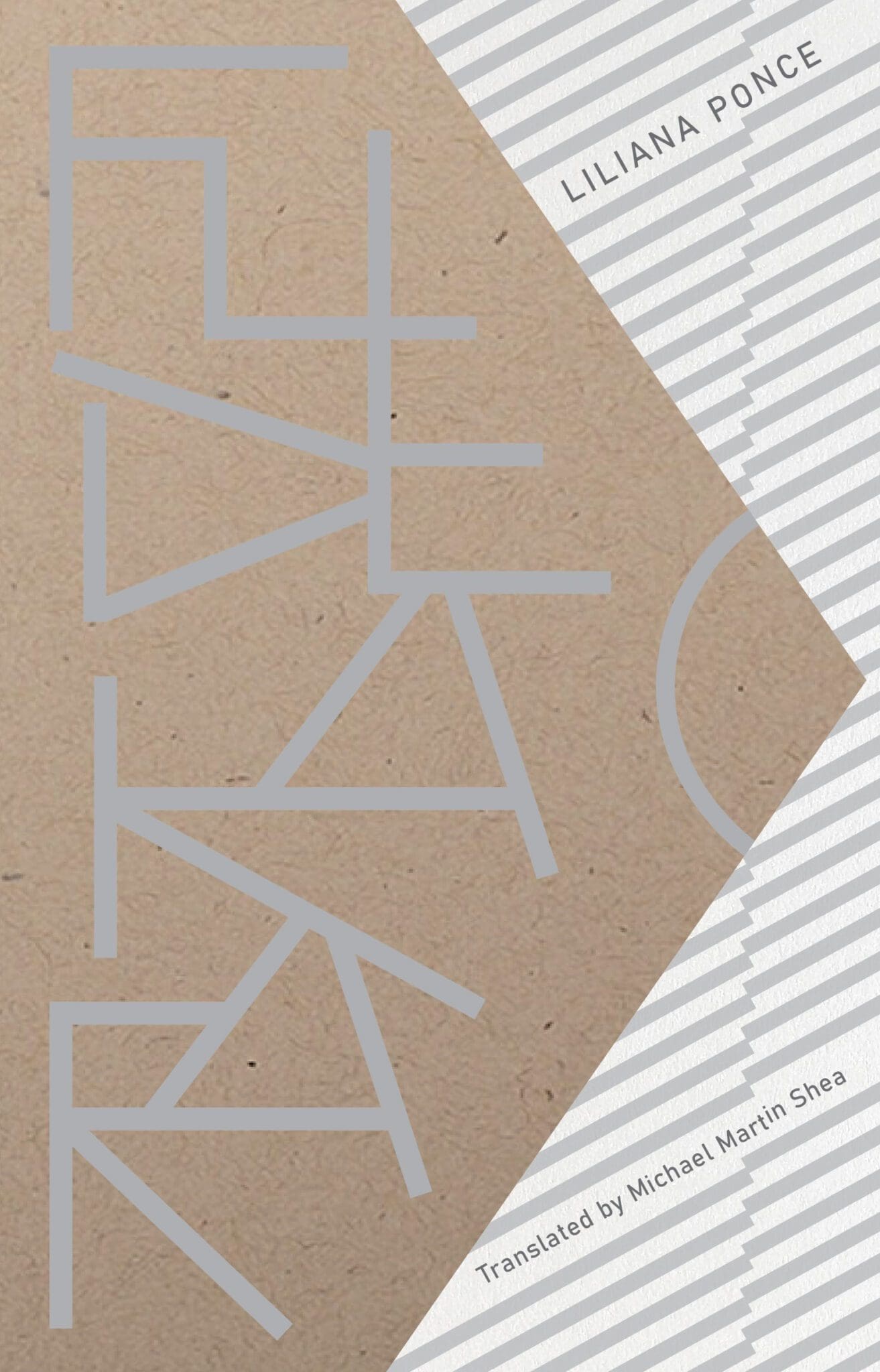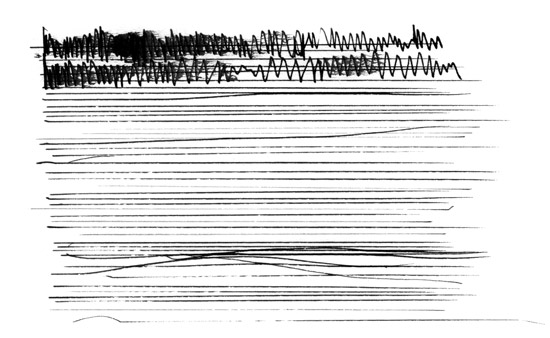
Fudekara (Cardboard House Press, 2022)
Written during a Chinese ideograph calligraphy class over 14 days at the University of Buenos Aires, Liliana Ponce’s Fudekara (translated by Michael Martin Shea) presents a map with no discernible destinations, only an ink-slicked, now-existing poet’s present in a book of time-loops and sense-challenging translative meditations. The word “fudekara” is a neologism formed by the Japanese words “fude” (“brush”) and “kara” (“from”). When passing through each day—or poem (“Day 1”; “Day 2”)—the reader, contemplating the “from” of the titular neologism, might find themselves considering the origin of the “signs” that “multiply the moments” (7). In Fudekara, a “moment” might be another word for a “poem”. While the collection begins with a deceivingly simple image of “the light of the lamp,” by “Day 2,” Ponce situates the reader in eye-opening nightfall, announcing:
Tonight, sound will be replaced by the eye. Breath will be replaced by the eye.
By filtering this isolated statement through the lens of “fudekara” (or “brushfrom”), the origins of the signs created by the brush (“There was paper, there was ink”) can be traced back to the poet’s “eye”. Sound from eye. Breath from eye. As each “Day” goes by, the production of sign activity becomes more transformative, rhythmic, and repetitive. By “Day 4,” words like “stroke” and “multiply” repeat like images from “Day 1” (“the light of yesterday’s images” / “the light of the lamp”).
“My obsession isn’t the stroke,” says Ponce’s speaker, “but the stroke enacted” (11). In other words, the speaker isn’t only concerned with presenting readers with a singular image that the numerous strokes produce, but the immediate moment or action of the stroke and that action’s link to the speaker-observer’s roaming eye. The speaker-observer renders past and present (“the light of yesterday’s images” / “the light of the lamp”) in the poem’s mutation of a space-time continuum.
Abandoning the construct of time falls in line with the speaker’s desire to “abandon the idea of person” (11). As the speaker gradually reimagines physical ideas of self (“I began to forget my hand”), concepts of day and light feel increasingly absent (“my brush loosens itself in answers to the moon”). As fixed notions of body and brush loosen, there are times when Fudekara feels reminiscent of poet Caroline Bergvall’s ink-blotty meditation on seemingly endless horizontal lines in the opening of her 2014 collection Drift (Nightboat Books):

From the beginning sequence of Caroline Bergvall’s Drift (Nightboat Books, 2014)

From the opening pages of Liliana Ponce’s Fudekara (Cardboard House Press, 2022)
Like the methodical, membrane-like opening sequence of Bergvall’s Drift, the opening pages of Ponce’s Fudekara forces the reader to translate language-less lines into poetry. While the snaking lines could be interpreted as a map’s longitudinal/latitudinal lines, the pathways also prepare readers of Fudekara to tackle questions of direction and navigation. In his translator’s note, Michael Martin Shea calls Fudekara an “ars poetica,” which might mean such questions of direction and navigation are actually challenges that Ponce is posing to historical understandings of voice and image.
Perhaps the repetition of Ponce’s strokes and days and signs are also a form of carving. Or self-carving. A carving into the walls of the cave of the self. Plato’s cave. The cave of allegory. The act of painting a new self in “symbolic blood.” And what to make of the addressee? A new shadow? A future self?
I close my eyes and enter into the cave. You’re waiting for me, to give me the map. I knew it was your map that I came for (27)
Fudekara contorts time, space, and language, all while posing questions of authenticity (“Why write confessions?”) and existential metaphysics (“I write so I don’t have to speak, so I don’t have to watch”) in ways that re-route possibilities for the human mind. One might further consider Jonathan Crary’s thoughts on temporality in Techniques of the Observer:
“an observer’s sensations always depended on the previous sequence of stimuli” (146)
What makes Fudekara’s poems’ repetition so surreal and affecting isn’t Shea’s sharp attention to replicating the rhythm of the poet’s source language alone, but also Ponce’s resistance to time itself. It might even be fair to call Ponce’s poetry a threat to time. A threat to standards, understanding, accessibility, and order.
Paul Cunningham manages the Creative Writing Program at the University of Notre Dame. He is the author of Fall Garment (Schism Press, 2022) and the The House of the Tree of Sores (Schism Press, 2020). His most recent chapbook is The Inmost (Carrion Bloom Books, 2020). He is the translator of Helena Österlund’s Words (OOMPH! Press, 2019) and two chapbooks by Sara Tuss Efrik: Automanias Selected Poems (Goodmorning Menagerie, 2016) and The Night’s Belly (Toad Press, 2016). He holds a M.F.A. in Creative Writing from the University of Notre Dame and a PhD from the University of Georgia. He co-manages Action Books.